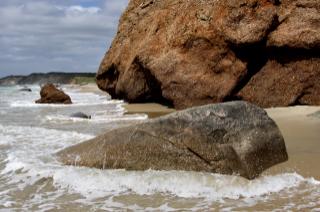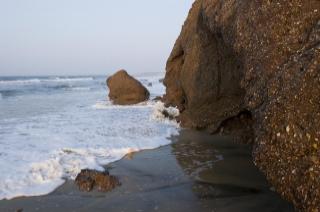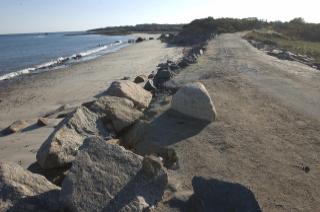Erosion
2009
For Martina Mastromonaco, Chilmark beach superintendent, the horseshoe she found recently on a dune at the west end of Lucy Vincent Beach is no lucky charm.
On the contrary, she thinks the ancient-looking piece of metal is a bearer of bad tidings. The game of throwing horseshoes at the beach has not been popular for many years, she reasons, so the fact that the ocean has uncovered this artifact now is a stark illustration of how fast her beach is disappearing.
The town of Oak Bluffs is proud to be “StormSmart.”
Or rather, the town is on its way to gaining said smartness. Being StormSmart has to do with one of those scary, invisible truths that no one wants to think about: sea level rise. And the debate is over. No matter how well the human race conserves energy from here on in, the sea around us will rise. Conservative estimates show the sea rising at least three feet over the course of this century, not including the impact of the planet’s rapidly melting glaciers.
2008
Coastal erosion has split Lucy Vincent Beach, temporarily cutting off a portion frequented by nude bathers at the point of a fossil-encrusted cliff, stretching the beach patrol and putting swimmers at risk.
2007
The irony of Oak Bluffs is that people so loved its beaches, they set about destroying them.
They built so close to the ocean’s edge they had to defend their development with a seawall. And the seawall prevented the natural replenishment of the sand, so the beach eroded away.
Geological time mostly runs incredibly slowly, in measures of
hundreds of thousands, if not millions or billions of years. No wonder
Bob Woodruff was excited about what happened over the weekend.
2006
On a calm day, ocean waves lap on the beach less than 20 feet from
East Chop Drive in Oak Bluffs. The edge of the road is already breaking
up.




